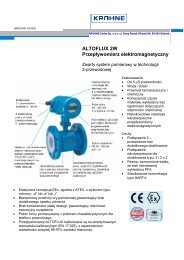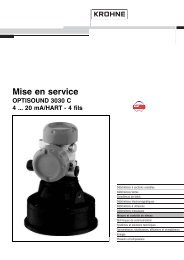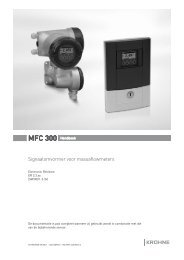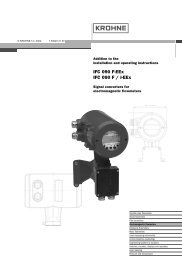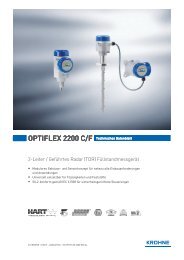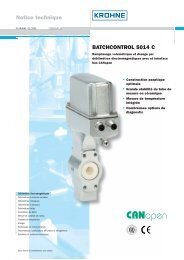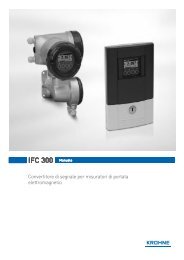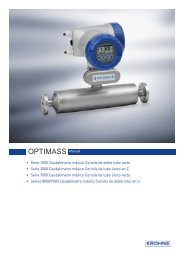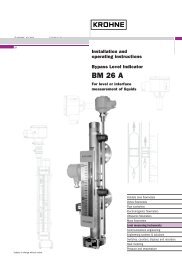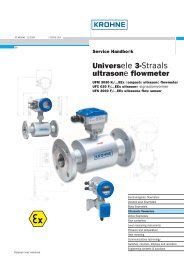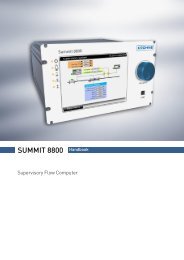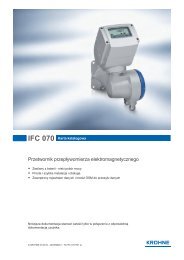OPTIFLUX Handbook
OPTIFLUX Handbook
OPTIFLUX Handbook
You also want an ePaper? Increase the reach of your titles
YUMPU automatically turns print PDFs into web optimized ePapers that Google loves.
4 ELECTRICAL CONNECTIONS<br />
<strong>OPTIFLUX</strong><br />
4.3 Input/output connnections<br />
The following non-intrinsically safe signal I/O (inputs/outputs) are available:<br />
I/O PCB<br />
Basic I/O<br />
Modular I/O<br />
Modular carrier with 1 or 2 I/O modules<br />
Profibus DP I/O<br />
Fieldbus I/O<br />
RS 485 Modbus<br />
Input/output functions, U n < 32 V DC, I n < 100 mA,<br />
U m = 253 V<br />
Current Output, active or passive, with HART<br />
Status Output / Control Input<br />
Status Output<br />
Pulse / Status Output<br />
Current Output, active or passive, with HART<br />
Pulse / Status Output, active or passive, highC or<br />
Namur<br />
Each module: 1 out of following 3 in-/output<br />
functions:<br />
Current Output, active or passive<br />
Pulse / Status Output, active or passive, highC or<br />
Namur<br />
Control Input, active or passive, highC or Namur<br />
Profibus-DP, active<br />
Profibus-PA or Foundation Fieldbus<br />
Modbus<br />
Notes:<br />
• The options separated by “/” are software selectable (can be changed by the user).<br />
• The options separated by “or” are hardware versions (must be ordered as suchs).<br />
• All outputs are passive unless otherwise indicated.<br />
• HighC means High Current input/output, Namur means that the in-/outputs are according to<br />
the NAMUR recommendations.<br />
30<br />
www.krohne.com 11/2008 • 7.30948.24.00



